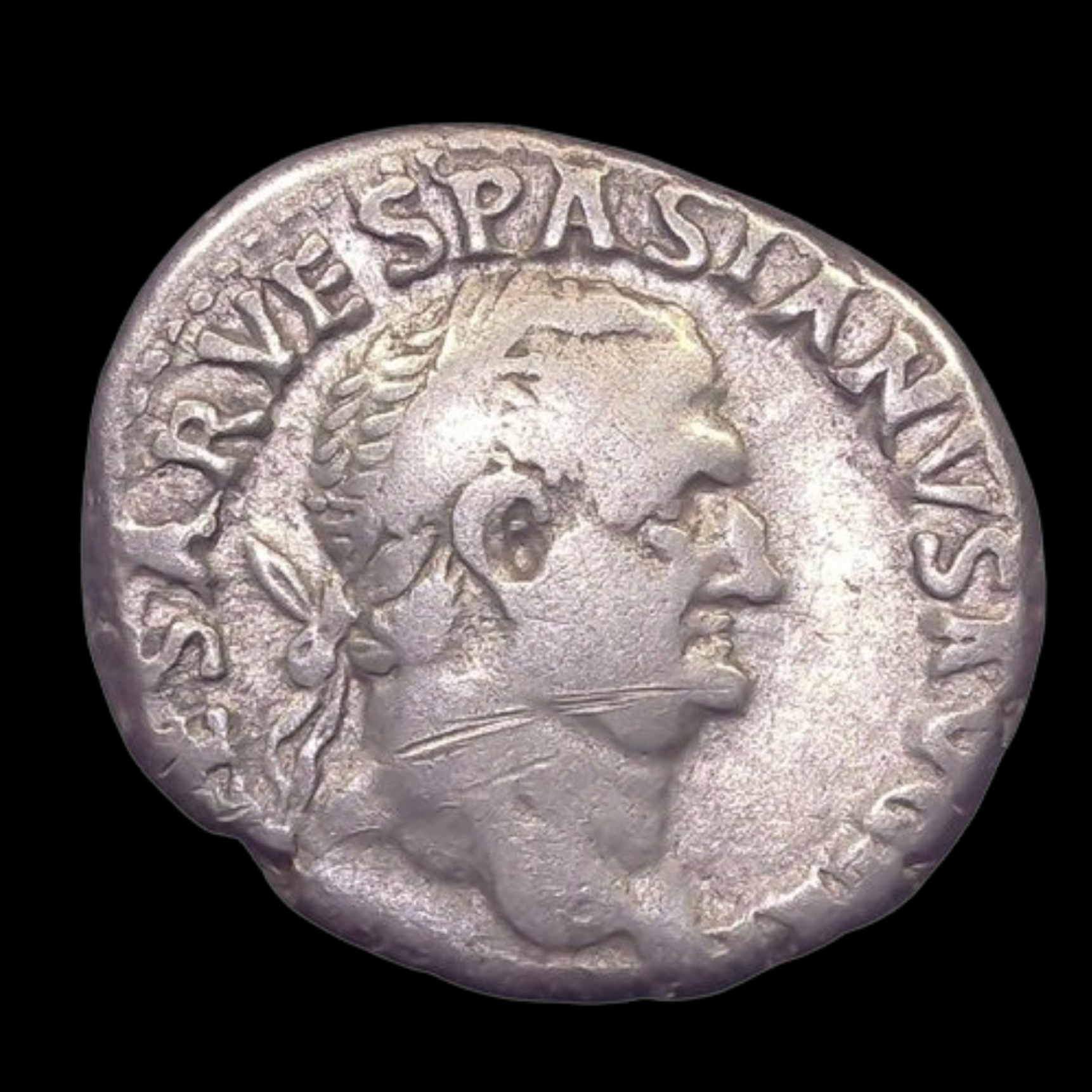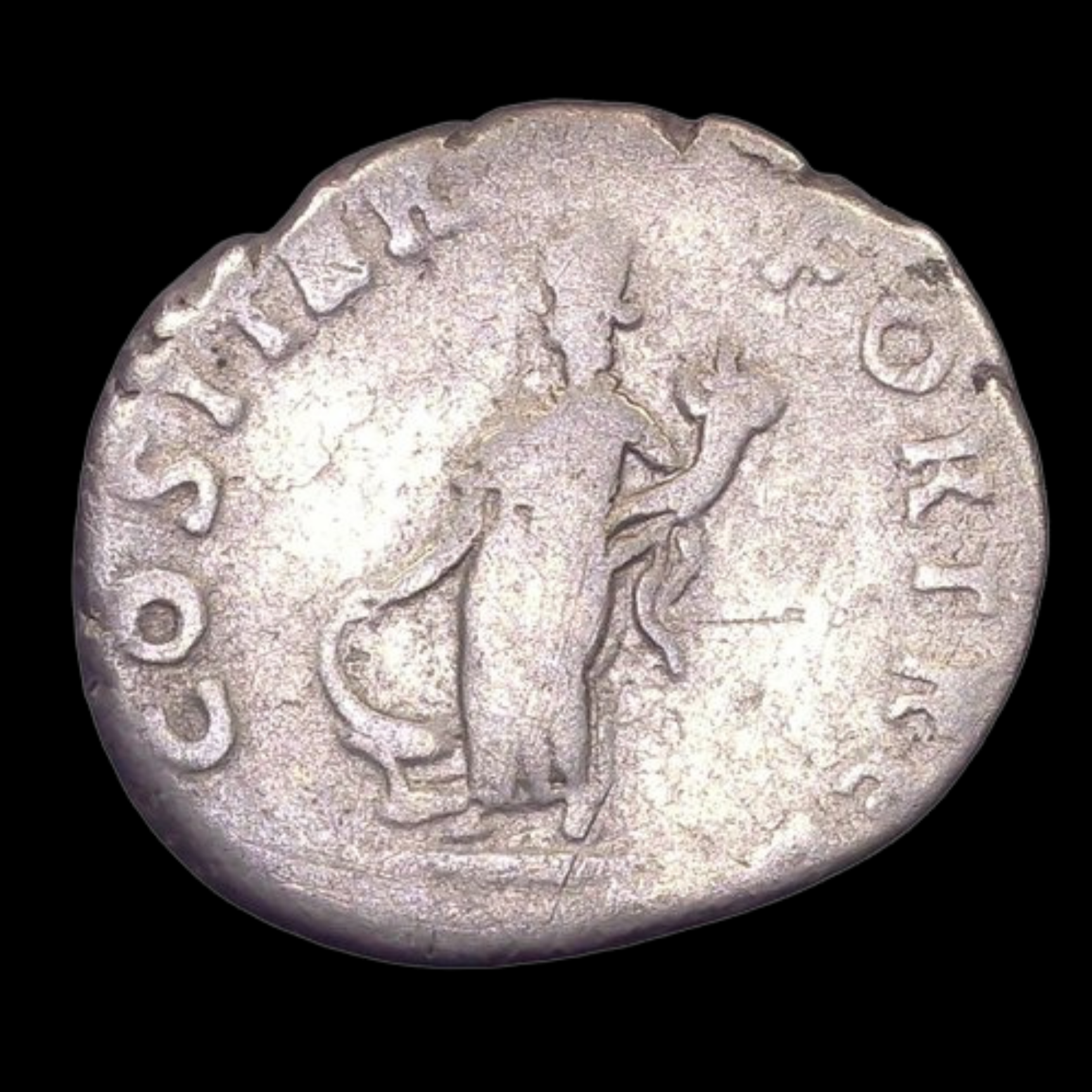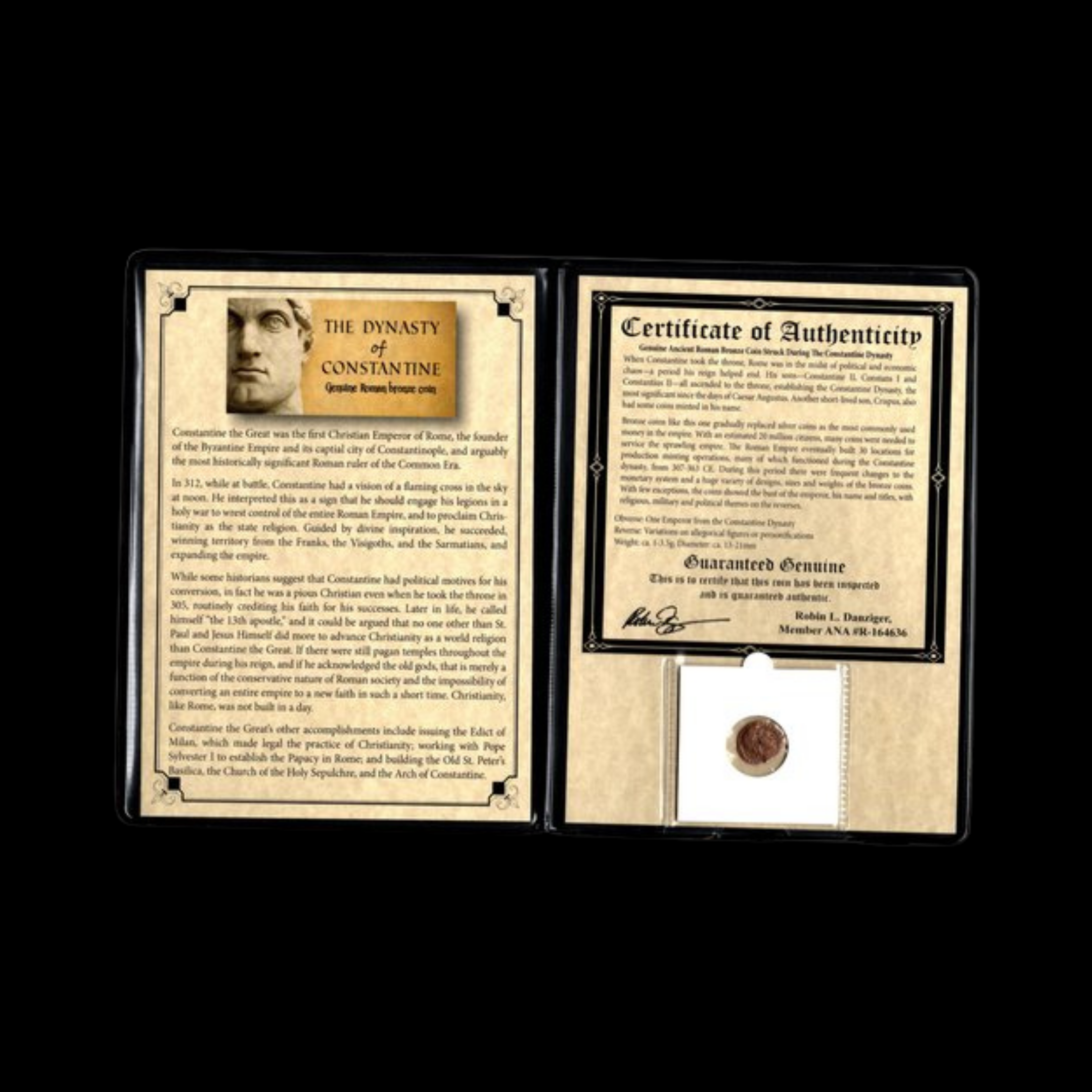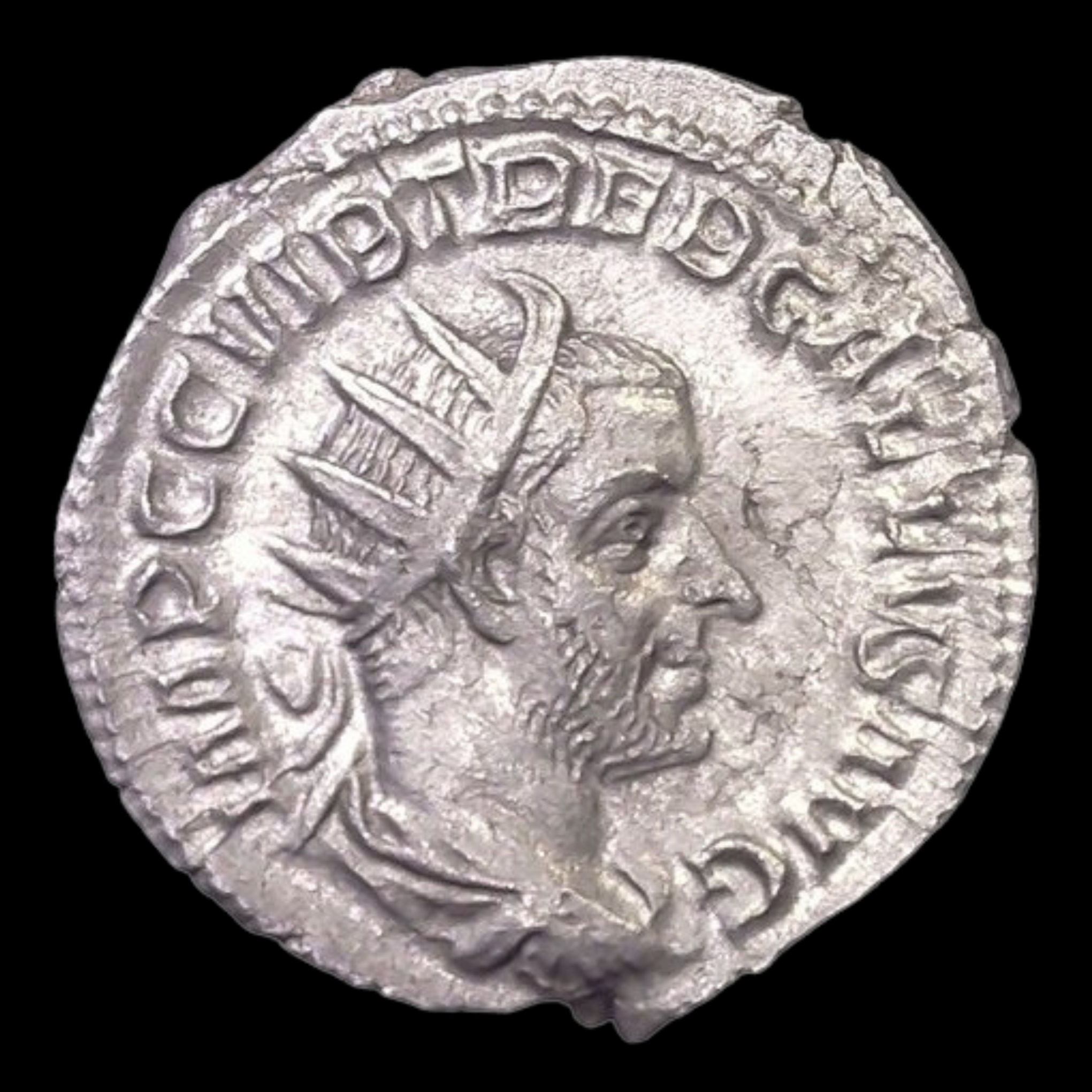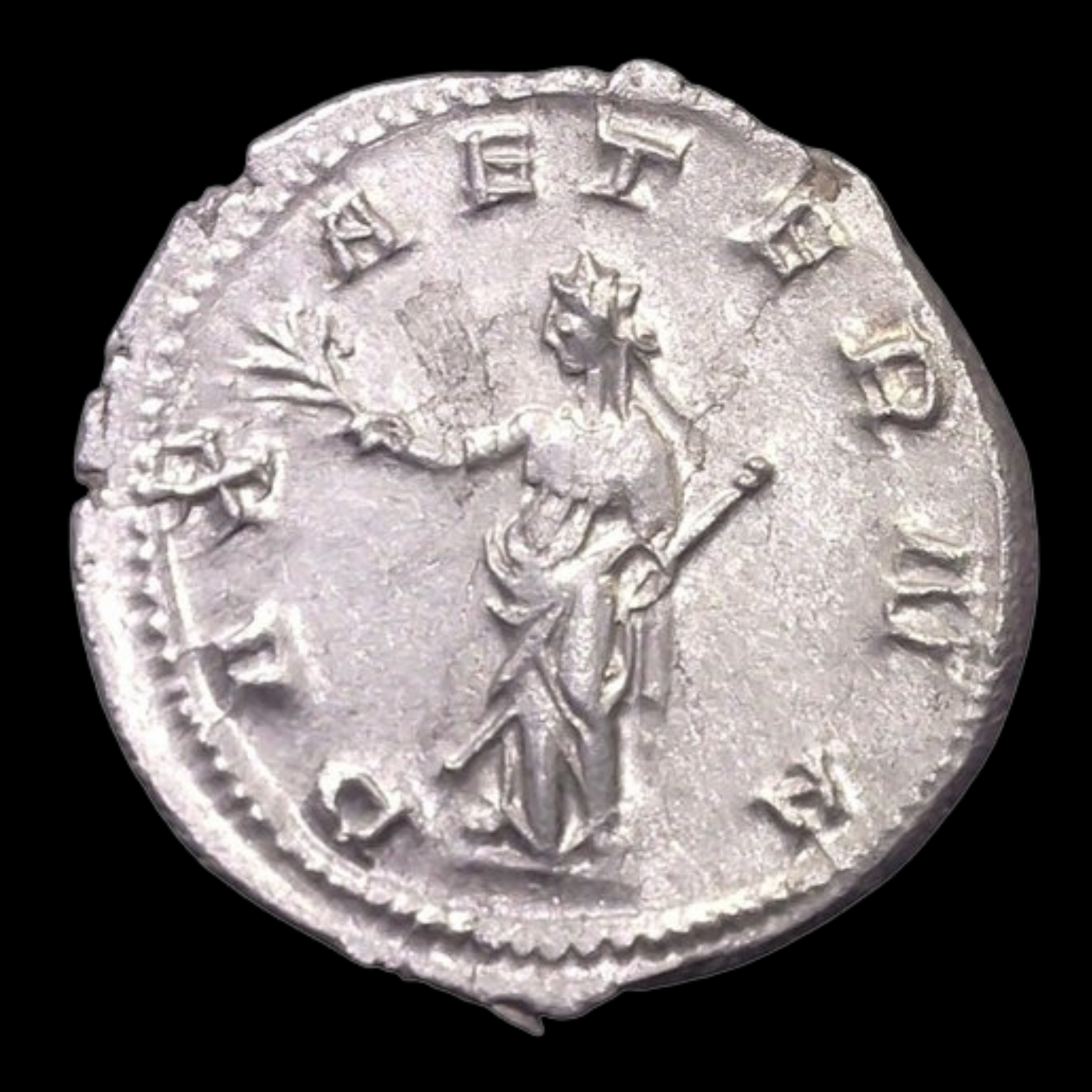 Image 1 of 6
Image 1 of 6

 Image 2 of 6
Image 2 of 6

 Image 3 of 6
Image 3 of 6

 Image 4 of 6
Image 4 of 6

 Image 5 of 6
Image 5 of 6

 Image 6 of 6
Image 6 of 6







Roman Empire — Tetricus II (AD 273–274) AE, NGC Certified (c. 1,750 years old)
The coins shown are representative examples of the grade and type, but not the actual specimens for sale. For details on NGC’s grading standards and definitions, please refer to our NGC Grading page.
Roman Empire – Tetricus II (AD 273–274) Æ Antoninianus
Obverse: Radiate and draped bust of Tetricus II right, as Caesar, seen from the front.
Reverse: Varies by issue, often depicting personifications such as Spes (Hope), Pietas (Piety), or other symbolic types inspired by Gallic propaganda, emphasizing continuity and stability in the face of crisis.
Specifications: Billon (bronze-based) Antoninianus | Diameter: ~18–21 mm | Weight: ~2.5–3.5 g | Mint: Cologne or Trier.
Historical Context:
Tetricus II was the son of Tetricus I, the last emperor of the Gallic Empire—a breakaway state that controlled Gaul, Britannia, and parts of Spain during the turbulent 3rd century. Elevated to Caesar in AD 273, he served as junior co-ruler until the fall of the Gallic Empire to Emperor Aurelian in AD 274. These coins, often hastily and crudely struck due to the instability of the times, are historically important as the final issues of the Gallic Empire. They reflect both the fragmentation of Roman authority and the efforts of a provincial regime to assert legitimacy through coinage.
Certification: NGC Certified – Securely graded and encapsulated by NGC, providing assurance of authenticity and long-term preservation.
The coins shown are representative examples of the grade and type, but not the actual specimens for sale. For details on NGC’s grading standards and definitions, please refer to our NGC Grading page.
Roman Empire – Tetricus II (AD 273–274) Æ Antoninianus
Obverse: Radiate and draped bust of Tetricus II right, as Caesar, seen from the front.
Reverse: Varies by issue, often depicting personifications such as Spes (Hope), Pietas (Piety), or other symbolic types inspired by Gallic propaganda, emphasizing continuity and stability in the face of crisis.
Specifications: Billon (bronze-based) Antoninianus | Diameter: ~18–21 mm | Weight: ~2.5–3.5 g | Mint: Cologne or Trier.
Historical Context:
Tetricus II was the son of Tetricus I, the last emperor of the Gallic Empire—a breakaway state that controlled Gaul, Britannia, and parts of Spain during the turbulent 3rd century. Elevated to Caesar in AD 273, he served as junior co-ruler until the fall of the Gallic Empire to Emperor Aurelian in AD 274. These coins, often hastily and crudely struck due to the instability of the times, are historically important as the final issues of the Gallic Empire. They reflect both the fragmentation of Roman authority and the efforts of a provincial regime to assert legitimacy through coinage.
Certification: NGC Certified – Securely graded and encapsulated by NGC, providing assurance of authenticity and long-term preservation.






